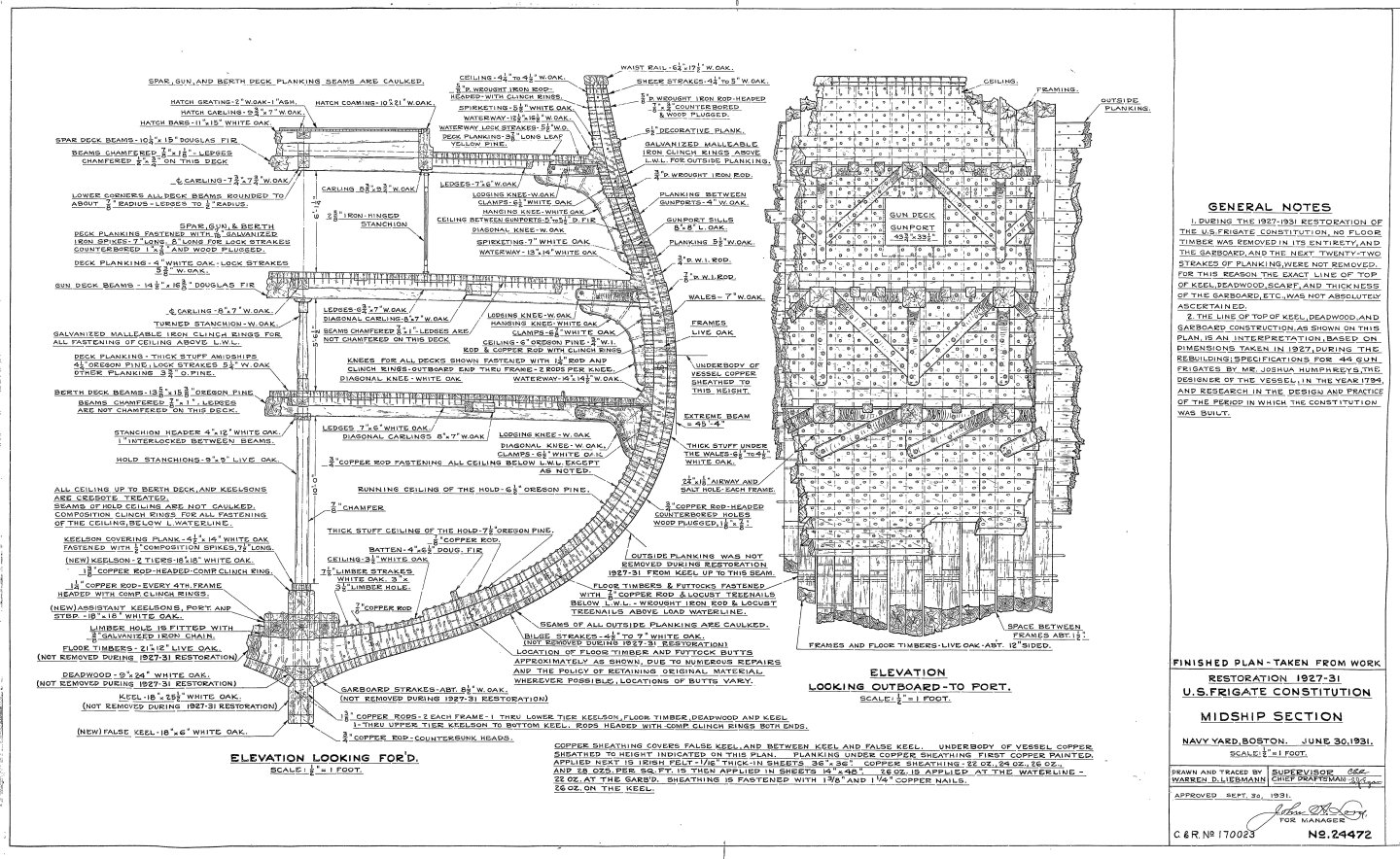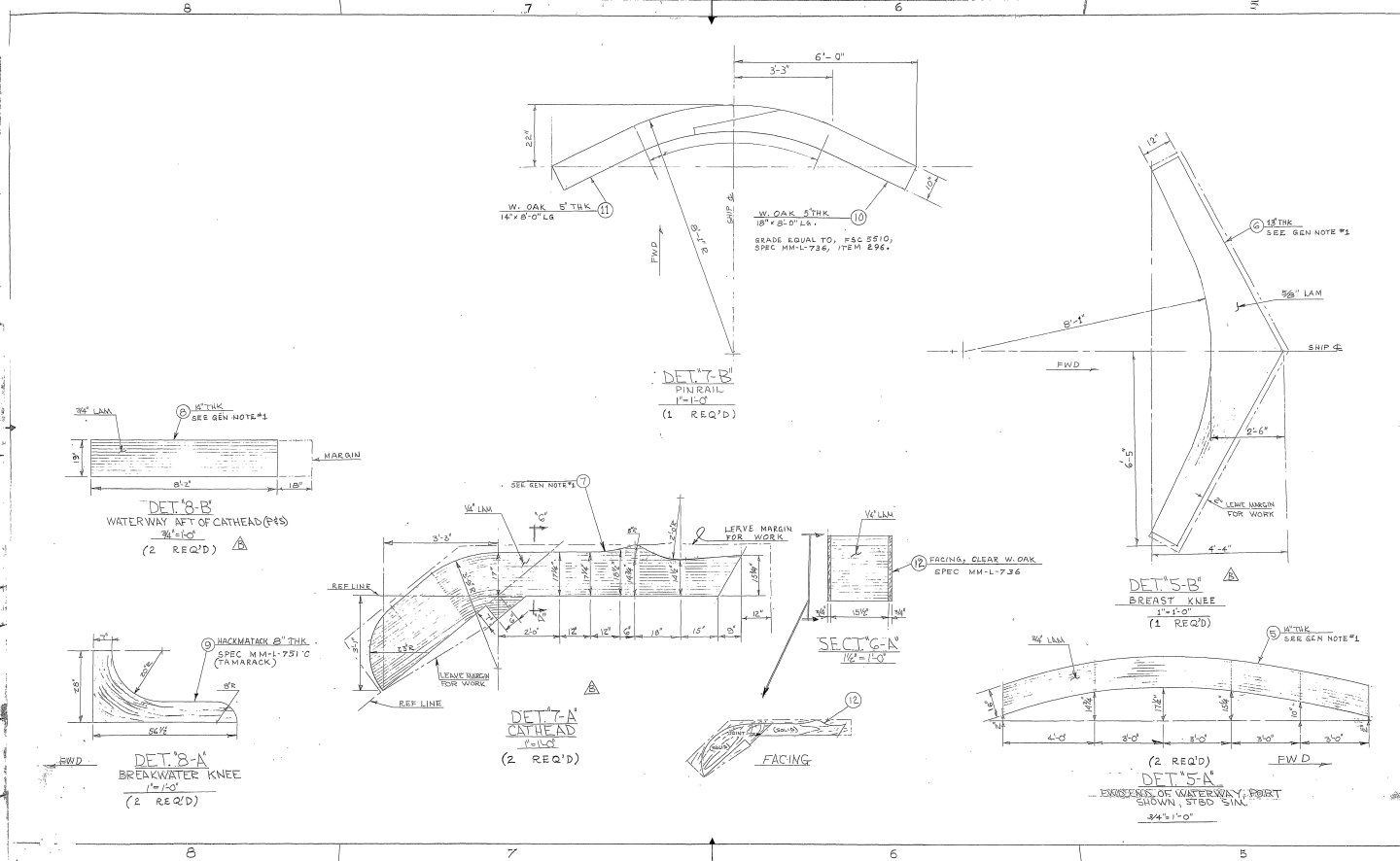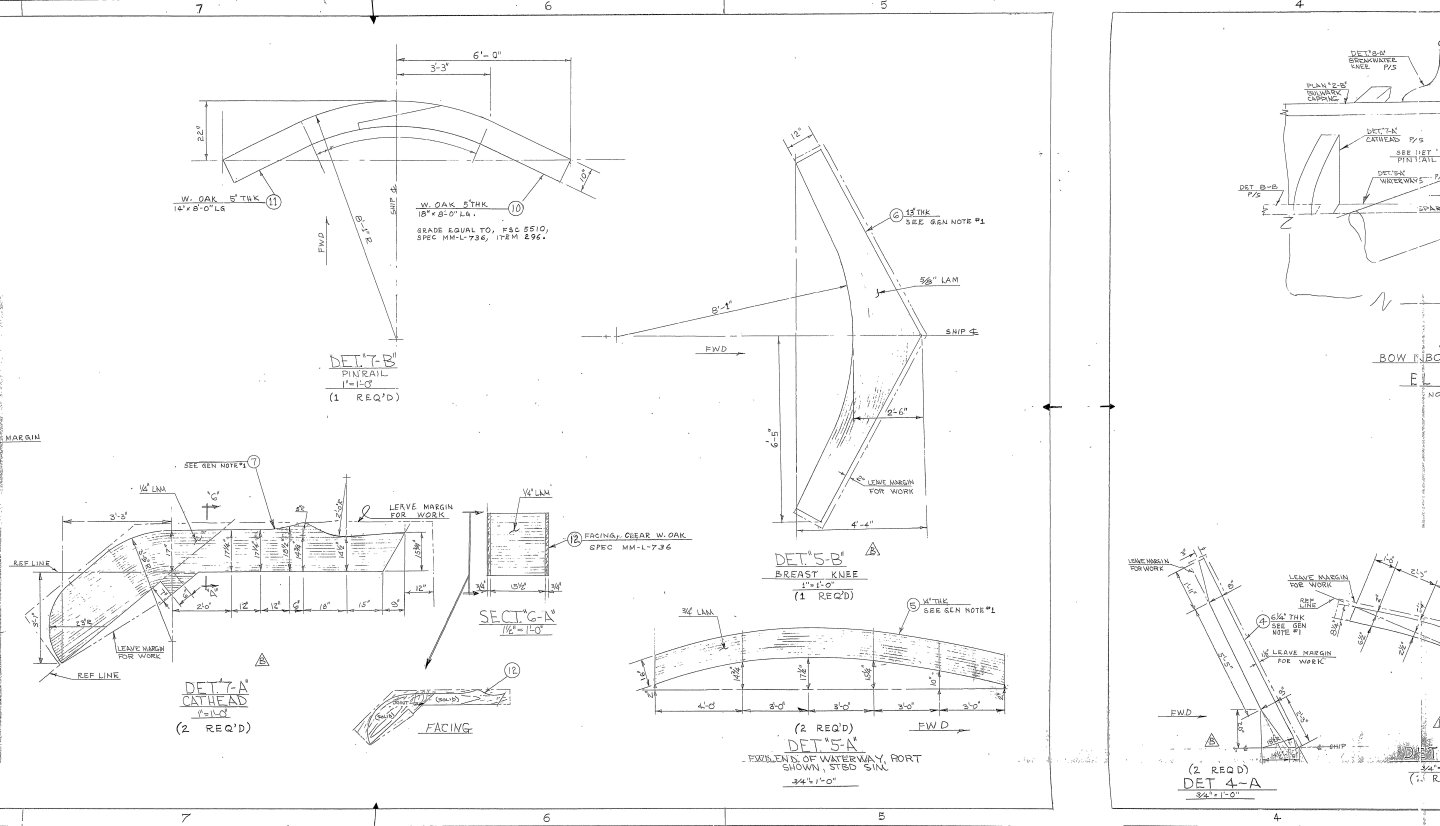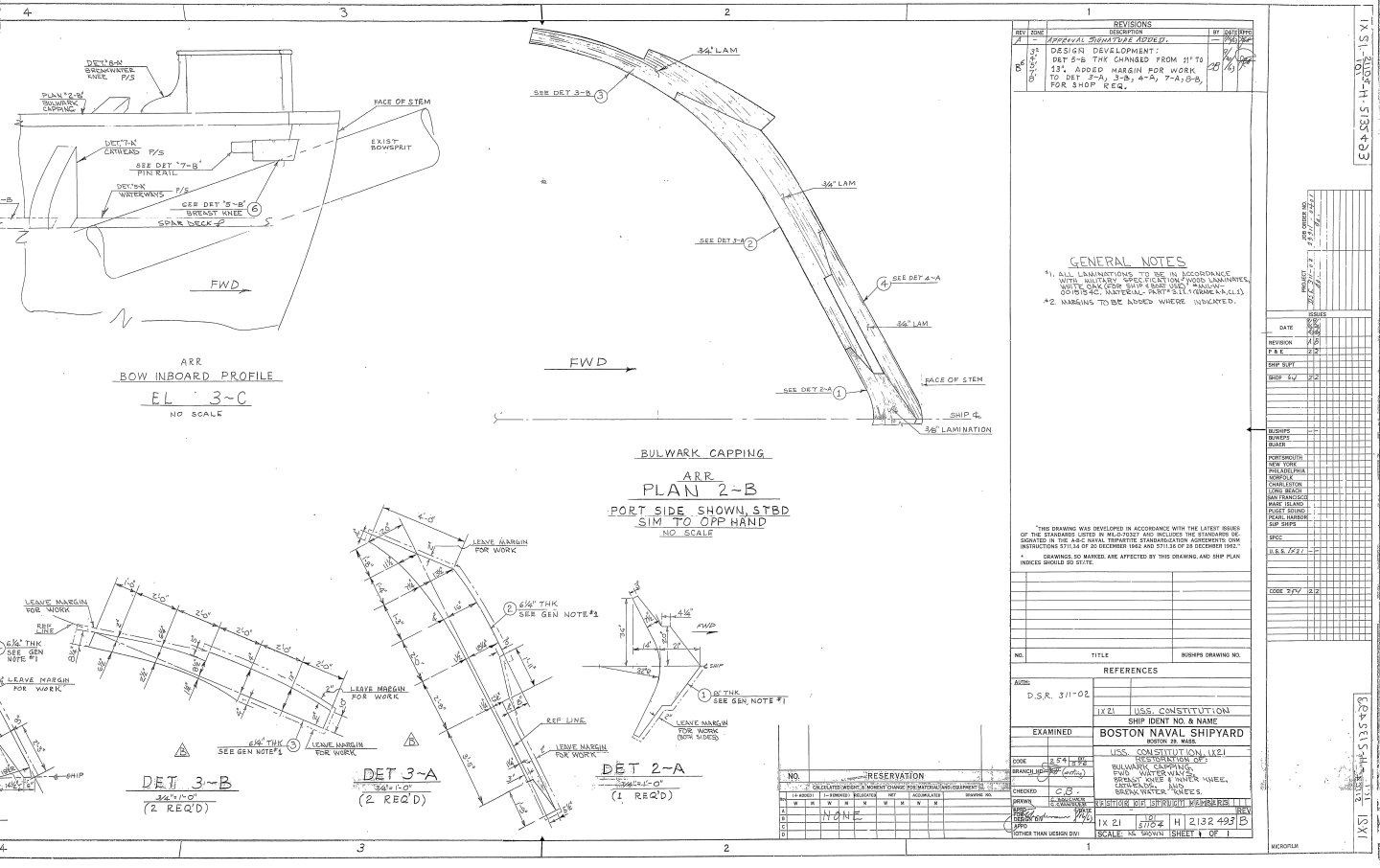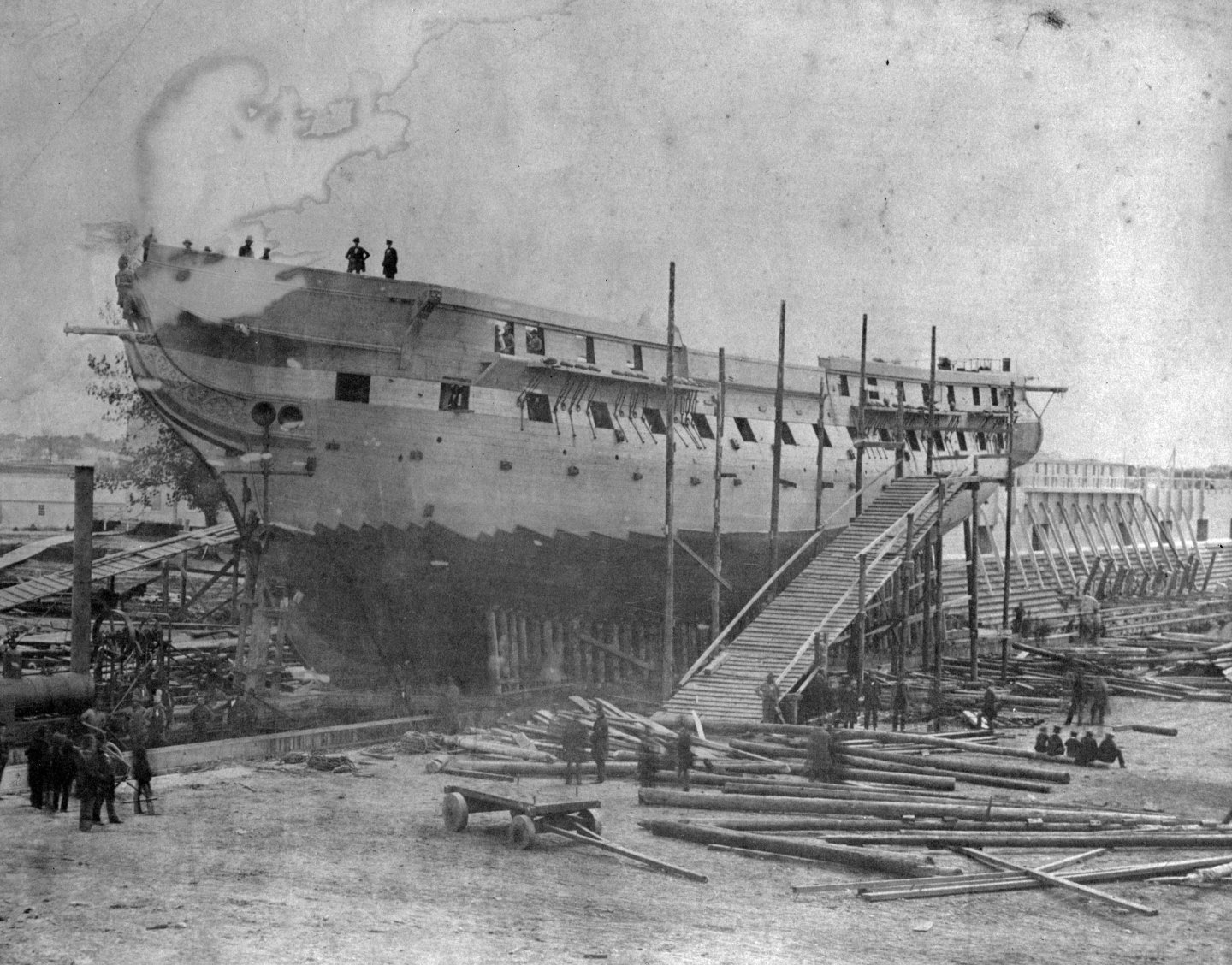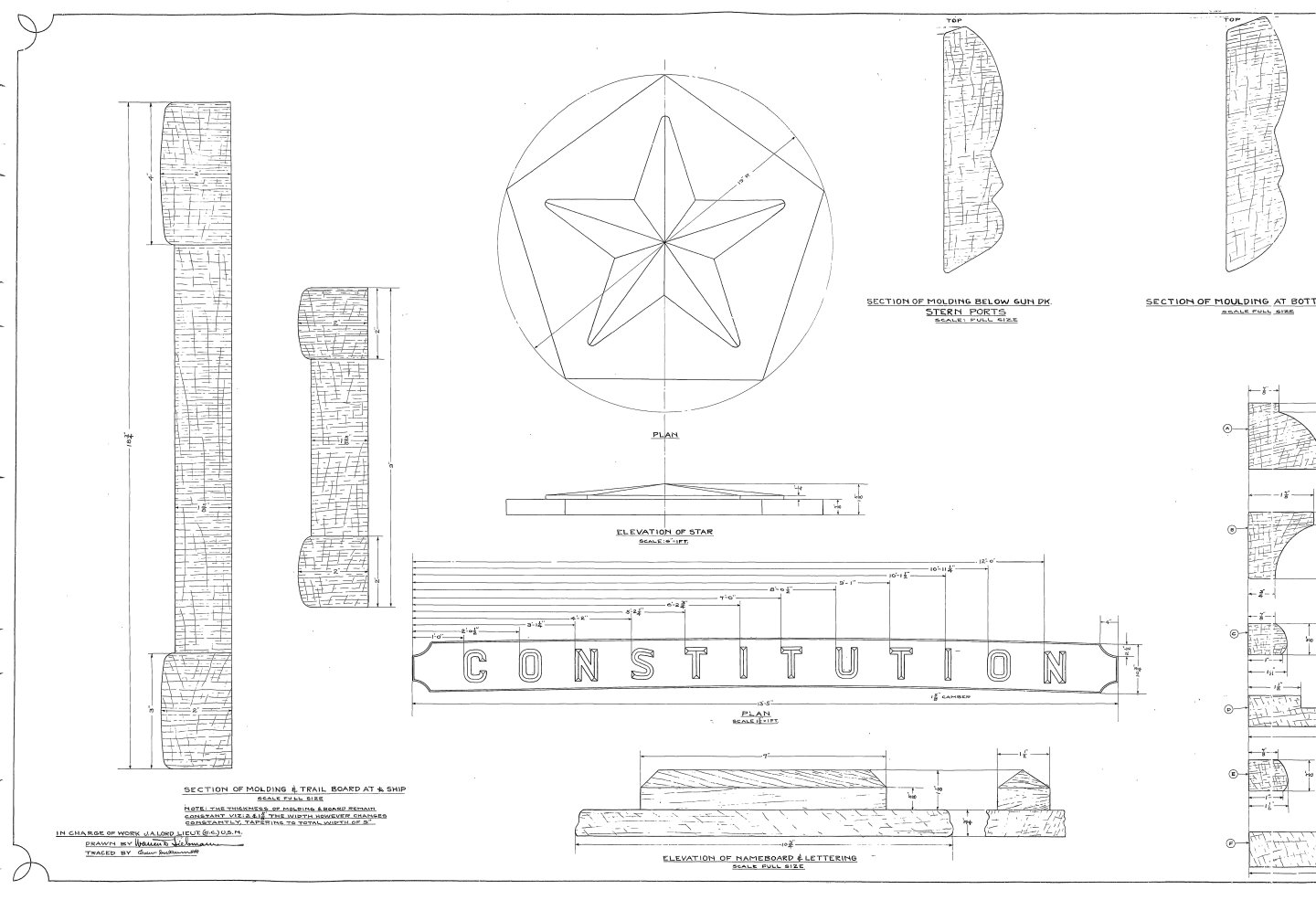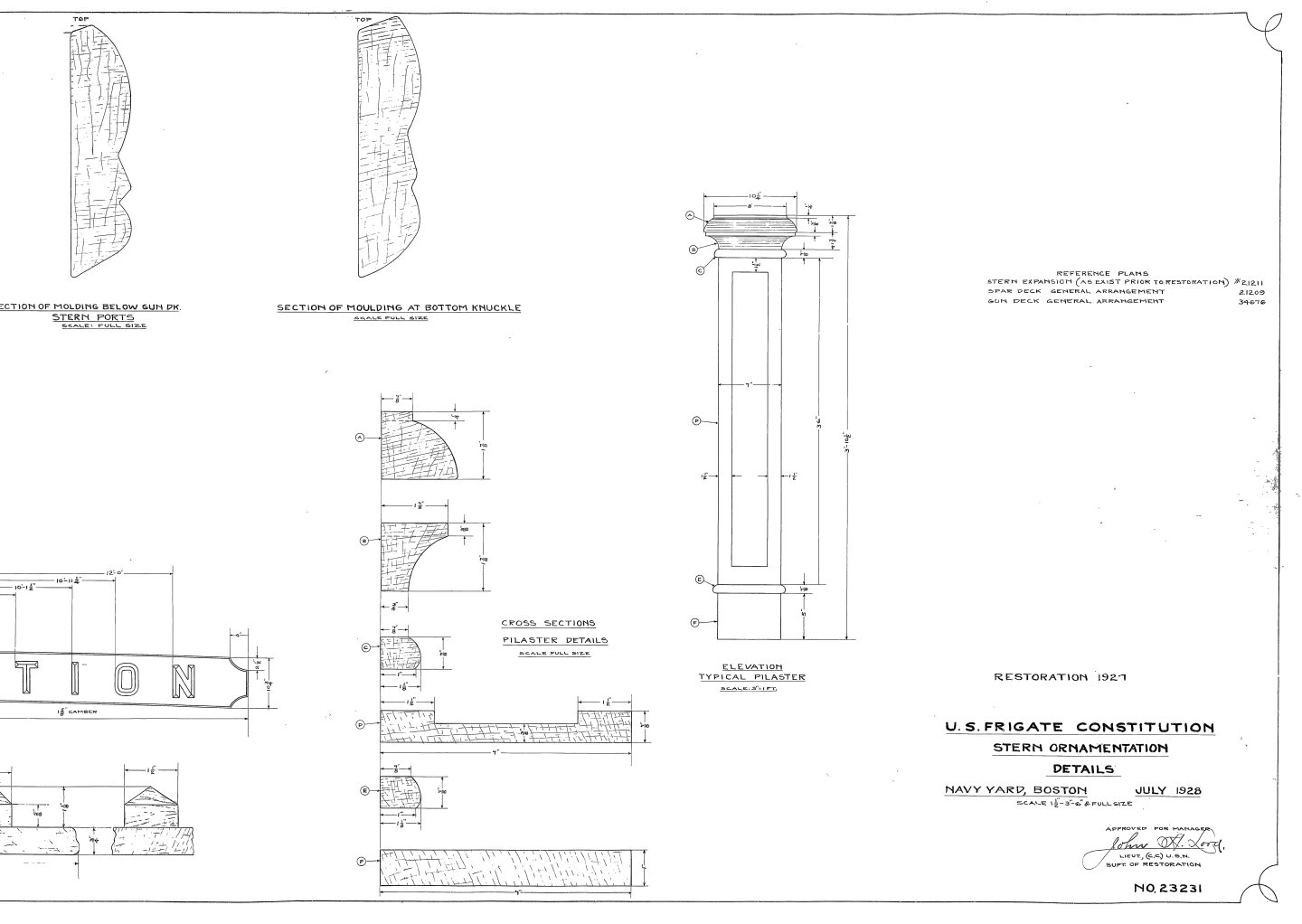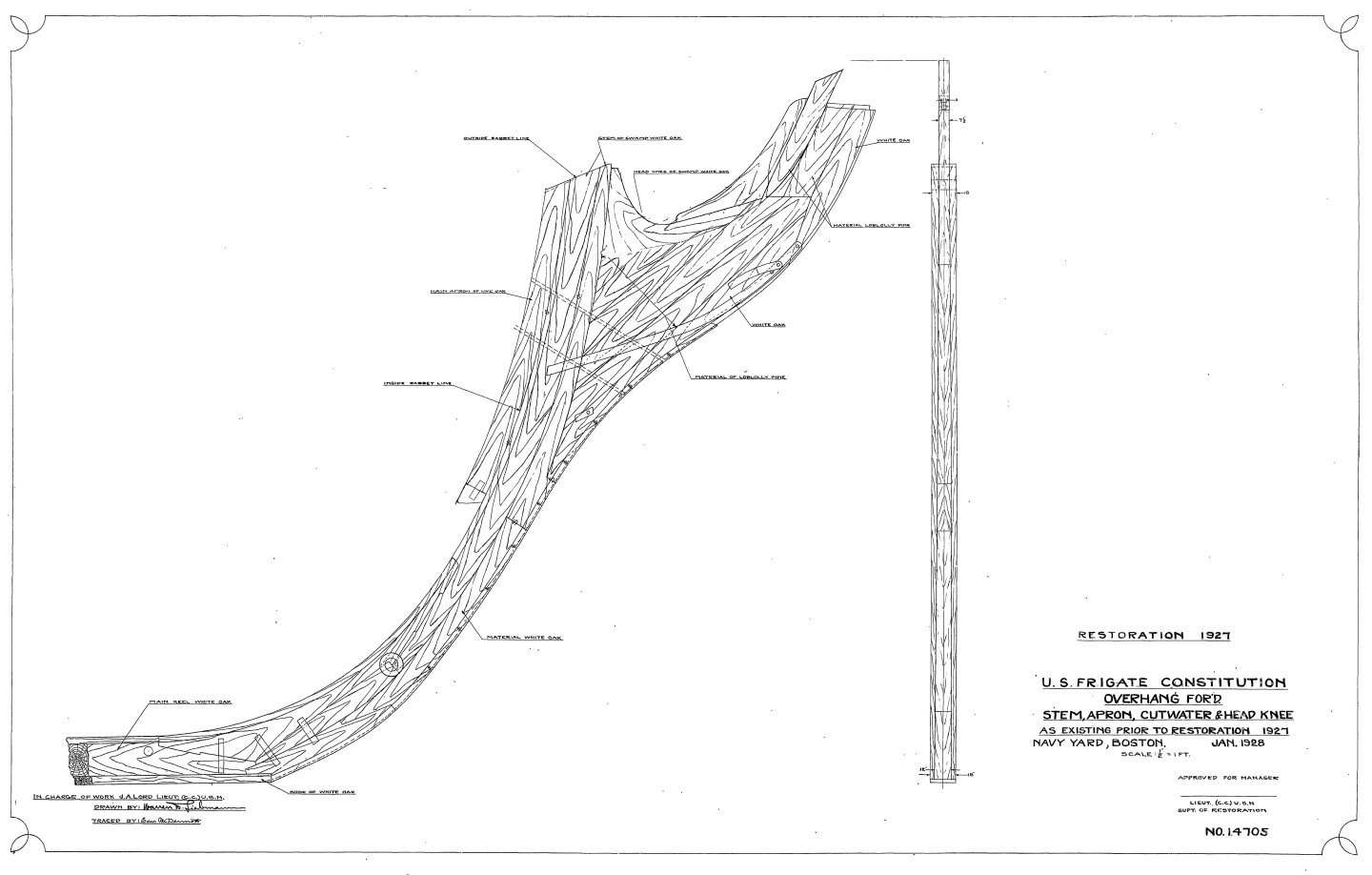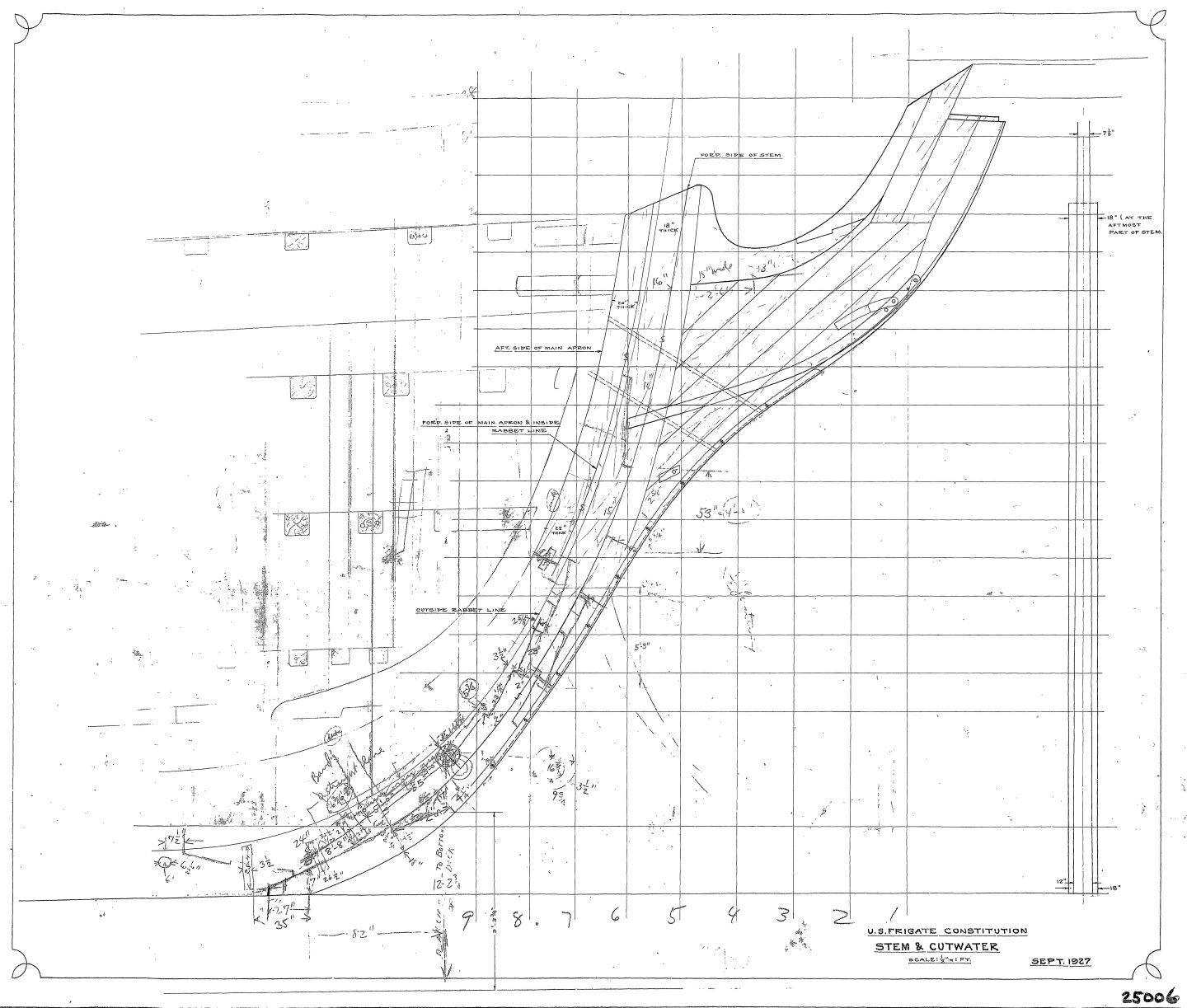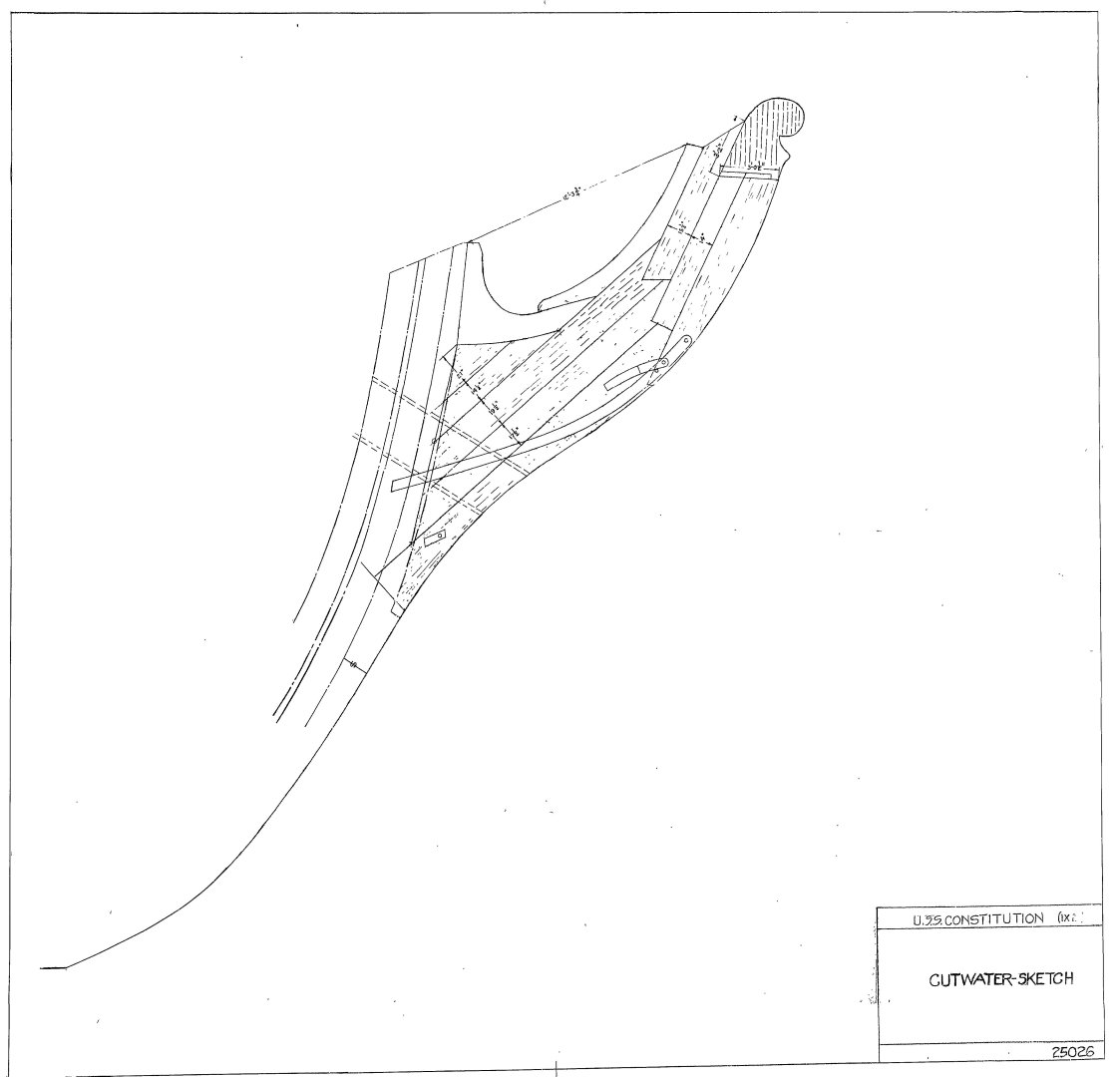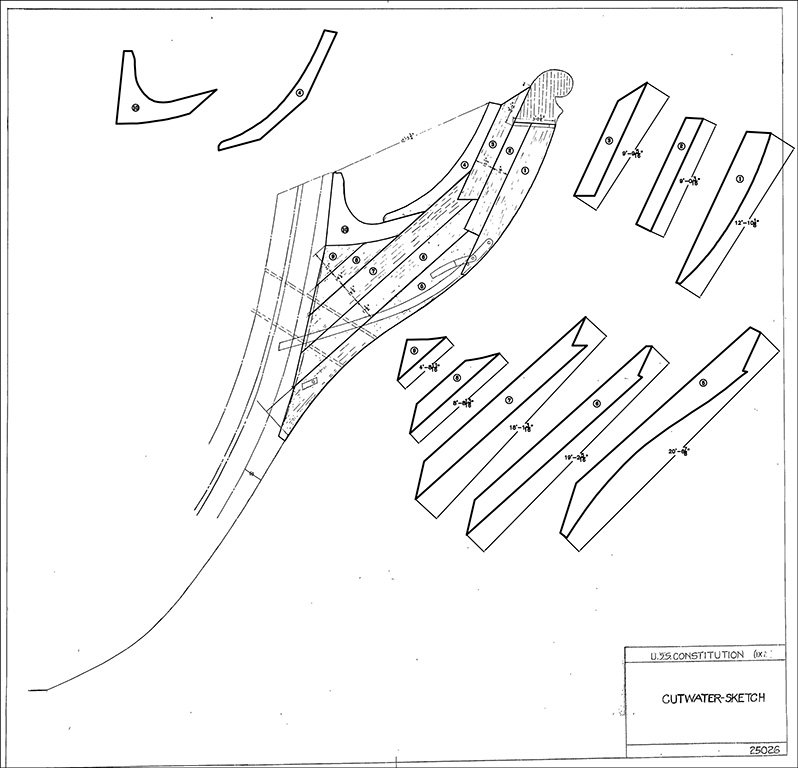-
Posts
2,633 -
Joined
-
Last visited
Content Type
Profiles
Forums
Gallery
Events
Everything posted by JSGerson
-
Click here for unegawaya One of the reasons the waterway is installed first is because that's the way the actual ship was built (see cross section plan). I see no reason you couldn't plank first then add the waterways second for a model. You would have to modify the waterway cross section to account for the planking under it. Jon
- 233 replies
-
- Model Shipways
- constitution
-
(and 5 more)
Tagged with:
-

USS Constitution by mtbediz - 1:76
JSGerson replied to mtbediz's topic in - Build logs for subjects built 1751 - 1800
Just catching up on a week's worth of everyone I've following's build logs. Beautiful work as always. Jon -

USS Constitution by mtbediz - 1:76
JSGerson replied to mtbediz's topic in - Build logs for subjects built 1751 - 1800
We are making models, not miniature reconstructions. I didn't cut the waterways either. It just has to look right no mater how you do it....and you do it very well. Jon -

USS Constitution by mtbediz - 1:76
JSGerson replied to mtbediz's topic in - Build logs for subjects built 1751 - 1800
Well, I got home late Monday afternoon and saw that you completed(?) fabricating the catheads, but as promised here are the US Navy plans. Jon -

USS Constitution by mtbediz - 1:76
JSGerson replied to mtbediz's topic in - Build logs for subjects built 1751 - 1800
If you are willing to wait a week, I would tell you the exact US Navy plan for the catheads. I am visiting my sister for the Thanksgiving holiday and am not able to access my computer. I am using hers to communicate. Jon -
The short answer is yes, you must sign up, but it doesn't cost anything. You can also choose the language you wish to read it in. I did, and have had no problems. Jon
- 233 replies
-
- Model Shipways
- constitution
-
(and 5 more)
Tagged with:
-
I like Marcus' idea. You may end up with a very unique model. I have not seen any 1804 based models. This is most important. NOW is the time to make these decisions. Trying to make or change your choices after you start building up the ship's frame will become increasingly difficult. Take a look at the history of the figurehead/billethead here: https://ussconstitutionmuseum.org/2017/03/03/bow-decor/ BTW, the missing Hercules figurehead was finally replaced in 1833 with the President Andrew Jackson figurehead, an unpopular President in the Constitution's home port of Boston, Massachusetts. One stormy night in1834, a protesting local captain sawed off the wooden Jackson's head. Since then, there hasn't been a figurehead on the ship, just the billethead decoration. Jon
- 233 replies
-
- Model Shipways
- constitution
-
(and 5 more)
Tagged with:
-
The stem that came with the kit was never meant to be seen without a covering of copper plate and paint so Model Shipways wasn't concerned about the individual pieces that it was comprised of. As such, the silhouette of the stem reflects closely what the ship looks like today so I am not surprised it doesn't match the old plans. You are trying to envision the ship as she was commissioned which nobody really knows what that looked like, other than some historically based educated guesses. Your stem plan looks plausible, but probably not historically accurate. I don't have any drawings of the stem earlier than 1927. Plan 14705 shows what the stem looked like prior to the 1927-31 restoration. So, if you were to try to me be more historically accurate, I would try to make the stem look more like what the 1927 plans show. Here are the plan numbers I have. If you can't find all of them at the museum, let me know. Here is the earliest know photograph of the ship showing her stem during her restoration in Portsmouth, Maine 1858. 1927 - No.: 14705 1927 - No.: 25006 1927 - No.: 25026 1929 - No.: 24779 1972 - No.: 25007 Hope this helps, Jon
- 233 replies
-
- Model Shipways
- constitution
-
(and 5 more)
Tagged with:
-
I would take the drawing you made in your last post, copy it and copy again in mirror image (port and starboard). Make a template by cutting the whole image as a whole out of the paper and with rubber cement, glue it to the stem on the model. With a sharp blade or using pin points, imprint the "puzzle pieces" into the wood. Then you can peel off the templates and finish embossing the lines into the wood. Jon
- 233 replies
-
- Model Shipways
- constitution
-
(and 5 more)
Tagged with:
-
Deck planks were about: · 20’ (6.4m) long · 8” and 10” (20 cm and 25 cm) wide At 1:76.8 scale: · 3¼” (8.25 cm) long · 7/64” and 1/8” (2.5 mm and 3 mm) wide Jon
- 233 replies
-
- Model Shipways
- constitution
-
(and 5 more)
Tagged with:
-
Planks are typically no more than 12" (30 cm) wide at midships and with an average length of 40’ (12 m). That means at scale of 1:76.8: · Max width: 5/32” (4 mm) (This what is provided in the kit) · Average length: 6” (15 cm) When approaching the bow or stern, the planks will narrow. Do not narrow more than ½ of the original plank width. Jon
- 233 replies
-
- Model Shipways
- constitution
-
(and 5 more)
Tagged with:
-
Most of the US Navy plans that I have can be found at the USS Constitution Museum which are free to the public to download. I have collected a few more obscure plans from various other sources of the years. Should you need photos, I have accumulated thousands of images of the ship from the present day all the way back to 1857. Earlier than that you will have to rely on contemporary paintings for images. Jon
- 233 replies
-
- Model Shipways
- constitution
-
(and 5 more)
Tagged with:
-
There is an excellent model of the 1797 configuration of the Frigate Constitution by Mark Antczak that were posted on Usetosail's log starting at post #556. Unfortunately, the original site these images were posted on, American Marine Models no longer exist there. I do have another set of 19 B&W images of a 1797 configuration model from the US Navy should you be interested. Hopefully these model will help you construct your model. Enjoy the journey Jon
- 233 replies
-
- Model Shipways
- constitution
-
(and 5 more)
Tagged with:
-
I just found your build log today. It looks like you are on an exciting, if not challenging endeavor. I have some additional US Navy plans of the stem that may (or not) help.
- 233 replies
-
- Model Shipways
- constitution
-
(and 5 more)
Tagged with:
-
To help gain some space for the eagle, maybe thin the molding a bit. If you look at the plans, the molding on the plans are a bit narrower than your fabricated moldings. Sanding their inner surfaces will also eliminate any kinks left over from the pins used in forming the curves. I assume you didn't use the kit's laser cut moldings because they didn't suit your purposes or aesthetics? Jon
-
Ohh, I bet you thought you had me on this one. I know of 38 builds which have not been completed (at least not posted online). I defined a build as dormant if I have not seen any postings for two or more years. Of the 38, 17 are not Model Shipways full hull: Billing Boats - 1 Bluejacket - 3 Constructo - 1 Mamoli - 4 Mantua - 1 Scientific - 2 Scratch - 1 MS Cross Section - 2 Mamoli Cross Section - 2 Scratch Cross Section - 1 That leaves 24 incomplete builds. Based on your query of a completed hull with partial masts and no rigging, I have these four candidates: Jeff Toma Livingstoneman Maturin52 Mundie If none of these four are not the build you remembered, maybe he wasn't building a Model Shipways model. I still might have him listed as an active builder (25) who has posted in the last year or so but just not recently. These I haven't checked. Then of course there are the completed builds (28). Let me know if I should look some more. Jon
About us
Modelshipworld - Advancing Ship Modeling through Research
SSL Secured
Your security is important for us so this Website is SSL-Secured
NRG Mailing Address
Nautical Research Guild
237 South Lincoln Street
Westmont IL, 60559-1917
Model Ship World ® and the MSW logo are Registered Trademarks, and belong to the Nautical Research Guild (United States Patent and Trademark Office: No. 6,929,264 & No. 6,929,274, registered Dec. 20, 2022)
Helpful Links
About the NRG
If you enjoy building ship models that are historically accurate as well as beautiful, then The Nautical Research Guild (NRG) is just right for you.
The Guild is a non-profit educational organization whose mission is to “Advance Ship Modeling Through Research”. We provide support to our members in their efforts to raise the quality of their model ships.
The Nautical Research Guild has published our world-renowned quarterly magazine, The Nautical Research Journal, since 1955. The pages of the Journal are full of articles by accomplished ship modelers who show you how they create those exquisite details on their models, and by maritime historians who show you the correct details to build. The Journal is available in both print and digital editions. Go to the NRG web site (www.thenrg.org) to download a complimentary digital copy of the Journal. The NRG also publishes plan sets, books and compilations of back issues of the Journal and the former Ships in Scale and Model Ship Builder magazines.


